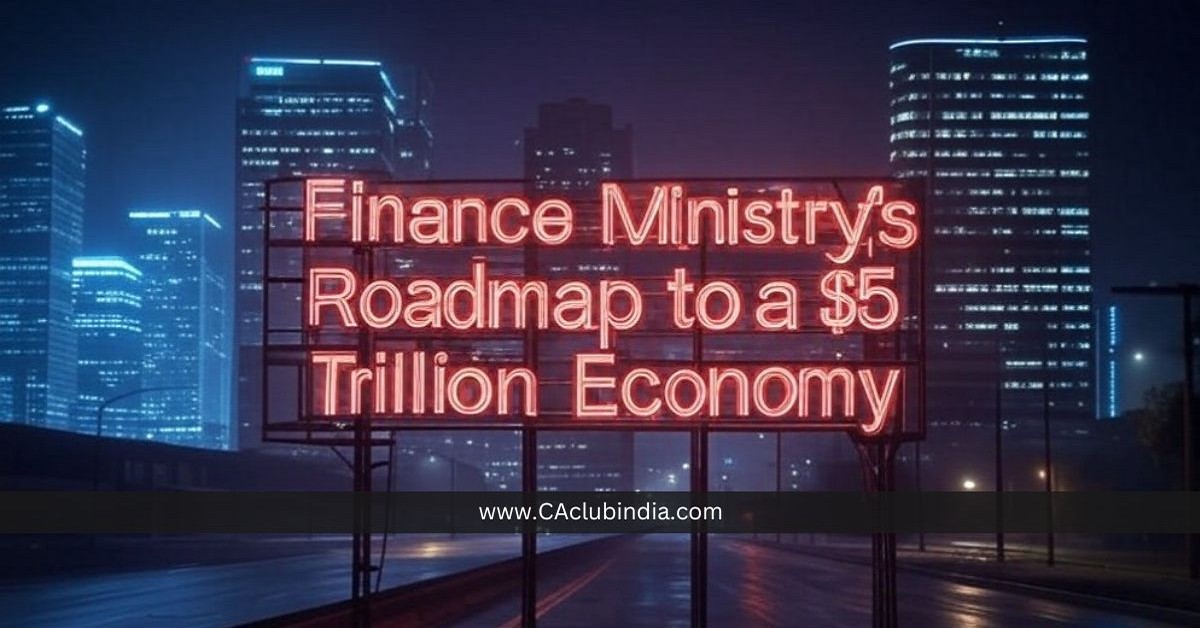The Union Finance Ministry has outlined a strategic roadmap to achieve India's ambitious $5 trillion economy target by 2028-29. The note, titled "Roadmap for $5 trillion economy in light of global economic and geopolitical circumstances," emphasizes measures to boost productivity, streamline regulations, ensure affordable land availability and secure energy needs as key drivers of growth.

Current Economic Landscape
India's economy stood at $3.57 trillion in FY24, with an annual growth trend of 6.5%-7%. However, the journey toward a $5 trillion milestone faces hurdles, including the depreciation of the Indian rupee, which recently hit a record low of 85.93 against the US dollar. The ministry warns that a weakened rupee could delay progress, underscoring the need for a stable and strong currency.
Despite these challenges, the note highlights that India is well-positioned compared to the global economy, which grapples with geopolitical conflicts, slowing productivity, and inflation in advanced economies. The International Monetary Fund (IMF) projects global growth at 3.2% in 2024, below the pre-pandemic average of 3.5%.
Key Growth Drivers
- Micro, Small, and Medium Enterprises (MSMEs): The government aims to unlock the potential of MSMEs through regulatory reforms and formalization under the Goods and Services Tax (GST) framework.
- Capital Expenditure Recovery: While capital expenditure slowed in the first half of FY25 due to general elections, the government recorded a 6.4% increase in capex during July-October 2024. Private sector investments, although impacted by global uncertainties and domestic political timetables, show signs of recovery, with order books of capital goods companies rising by nearly 24% in FY24.
- Banking Sector Resilience: A strong banking sector with improved fundamentals is expected to support economic stability and growth.
- Energy and Land Reforms: Addressing energy needs and ensuring affordable land access are critical for accelerating industrial and infrastructure development.
Challenges to Overcome
- Currency Depreciation and Capital Flight: The weakening rupee and the prospect of sustained high interest rates in advanced economies increase the risk of capital flight from emerging markets like India.
- Export Slowdown: Global growth uncertainties and structural weaknesses in economies like China could impact India's exports, posing a challenge to GDP growth.
- Inflationary Pressures: Advanced economies struggling to bring inflation within acceptable levels could have spillover effects on emerging markets.
Policy Recommendations
The ministry's note stresses the importance of aligning policies for sustained domestic growth, maintaining macroeconomic stability, and addressing global uncertainties. Reform efforts at all levels of government are critical to achieving the $5 trillion target.
Looking Ahead
The second half of FY25 is expected to witness a rebound in private and public capital expenditure, with the pent-up energy in private investments likely driving growth in FY26. Combined with strong domestic fundamentals, these factors position India to navigate global headwinds and achieve its economic aspirations.





 CAclubindia
CAclubindia


